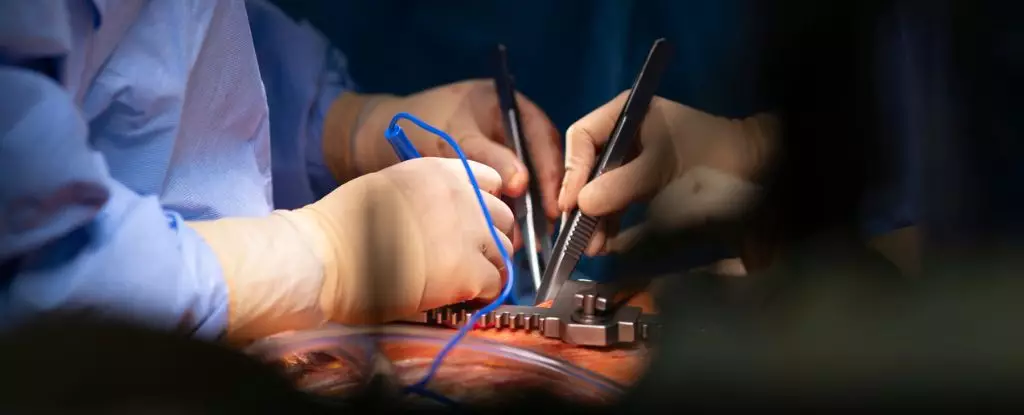In recent years, medical science has taken striking strides in extending life through innovative organ preservation and transplantation techniques. The daring procedure at Duke University, where a seemingly lifeless infant heart was revived after a cessation of over five minutes, exemplifies this relentless push toward redefining the boundaries of life and death. This groundbreaking act serves as both a testament to human ingenuity and a stark turning point in transplant medicine. Yet beneath the triumph lies a murky ethical landscape that stirs controversy and moral tension.
The Technical Marvel and Its Limitations
The concept of ‘on-table reanimation’ harnesses sophisticated machinery—the oxygenator, centrifugal pump, and custom-designed reservoirs—to bring an organ back to life outside the human body. Such innovation is especially critical for infant hearts, which require a delicate, miniature setup that traditional apparatus cannot accommodate. The procedure’s success—demonstrated by the infant’s six-month health status—indicates that this method can potentially save dozens, if not hundreds, of lives.
However, critics rightly question whether these technological marvels are fully understood or safe for widespread application. The long-term effects of such procedures remain uncharted. While early results seem promising, the risk of unforeseen complications persists, and the ethical implications of reanimation are intertwined with concerns about how we define death itself.
The Ethical Quagmire: Death, Reanimation, and Moral Boundaries
At the heart of the controversy lies the question of how death is defined. Medical professionals traditionally declare death based on irreversible brain activity cessation or circulatory failure. When surgeons bring a heart back to life after circulatory cessation, they challenge foundational notions of what constitutes death—a concern that many ethicists find unsettling.
Critics argue that reanimating hearts in donors declared dead by circulatory standards muddles the clear-cut boundaries we rely upon to honor autonomy, dignity, and moral certainty. They contend that reviving such organs blurs the line between life and death, risking a slippery slope where clinical definitions become malleable to meet transplant needs. The risk is that society might begin to view death as a flexible concept, potentially undermining trust in medical and legal protocols.
Supporters of these procedures claim that they are ethically justified because they expand the donor pool, saving more lives and reducing suffering. They argue that as long as consent is obtained and transparent protocols are followed, the benefits outweigh the risks—yet this comfort hinges on society’s ability to reconcile technological progress with moral clarity.
Balancing Innovation with Ethical Responsibility
The Vanderbilt team’s approach, which preserves hearts via cold flushing without attempting reanimation, offers an intriguing alternative that sidesteps some of the moral quagmires associated with full reanimation. By avoiding the restoration of heartbeat activity in donors declared dead by circulatory criteria, this technique may satisfy ethical concerns about blurring death boundaries.
Still, even with such innovations, the fundamental debate remains unresolved: should we push forward with techniques that redefine death in the pursuit of saving lives? Or should we exercise caution, respecting the age-old moral boundaries despite the toll of organ shortages?
In a broader sense, society’s response to these breakthroughs reflects our values. We are caught between the undeniable promise of saving helpless infants and vulnerable patients, and the risk of sidestepping moral values we have long held sacred. This tension calls for open, honest discourse—an acknowledgment that technological advancements should not outpace our ethical maturity. Without careful ethical oversight, these medical marvels risk becoming little more than moral quagmires disguised as progress, threatening to erode the very foundations of trust in medicine and society.



Leave a Reply